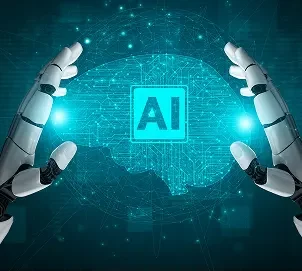In 2025, technology is moving faster than ever. And, gaming isn’t just a hobby any more, it’s part of everyday life. Thanks to VR and AR, 3D games have taken the spotlight. Gamers look for real, detailed and immersive experiences than ever before. This is the reason developers are becoming more creative and innovative. But here’s the thing – building a 3D game isn’t cheap. It takes a lot of work, time and money. As per reports, the global mobile game market is about to reach $153.5 by 2027 and the global number of mobile gamers is said to be 2.6 billion. So, if you’re planning to invest in iOS/Android game development, you may need to plan a budget of $50,000 to $200,000. And, it might go as high as $1,000,000+ or more depending on the complexity of the game. In this blog, we’ll break down what actually goes into the cost of 3D game development in 2025. We will give you a clear picture of what it really takes to turn a game idea into a playable reality.
Factors Affecting the Cost of Unity 3D Game Development
Unity 3D is one of the most popular game development tools. Its advanced features help you bring ideas to life. This tool is useful for creating smooth animations to realistic environments. Many developers use this tool as it works well for small and large games. You can use it to develop games for almost all platforms including mobile, PC, and even VR. In the next section, we’ll walk through the key factors that affect the cost of developing 3D games using Unity.
1. Use of GDD (Game Design Document)
A Game Design Document, or GDD is like a game’s master plan. It covers everything from storyline to characters. You can control how the game works, how the sound and visual should feel. It’s used by the whole team to keep aligned and know exactly what to build. The more detailed the document, the more time is spent to understand, which increases development costs. But a good GDD is worth it as it reduces confusion and improves teamwork.
2. Choice of developer
The cost of making a game also depends on the experience of the developer. If you work with an experienced team, it’ll cost more – but the results are good. Skilled developers know which functionality will work or not. They’ve seen problems before and know how to solve them quickly. This will save time and reduce mistakes. If you hire a less experienced team, it will cost less but might take a longer time to develop the game. Therefore, it is recommended to think about your budget and your goals before you invest any talent.
3. Functionality and Complexity
The more complex the game is, the more will be the development cost. It is because building complex game mechanics and realistic graphics would take more time, effort and money. If you want to add special features – you may need extra software or plugins, which adds to the cost. So, you must have a clear idea about what you really want before starting the development. A well-planned game idea will help you to save time, money and avoid delays.
4. Number of Players Involved
One aspect of a game is the number of players involved. You will be required to pay more for a multiplayer game. You will have to spend some other money on things like configuring servers, and strong network connection capabilities. You must ensure that the game is running smoothly at all times. This means regularly spending time on coding, testing, and on-going updates. As the number of players increases, it will increase the costs. You need to be attentive at the time of launch as well. You’re required to have a developer and customer support to handle player issues and traffic spikes.
5. Level of development expertise
The skill of the developer also affects the timeline of the development. These features take more time and effort. Also, you may need to enhance the team size depending on the complexity of the game. You can hire experts for certain parts like sound, animation, or tricky coding mechanics. All this adds to the budget. Therefore, it’s important to match your team’s skills with the game’s complexity.
6. Use of Advanced Technology
Using advanced technologies like VR and AR can increase the overall cost of game development. You need special hardware and software to build games. Also, only skilled developers can only work on these emerging technologies. You need to understand that VR and AR games take more time for development. It is due to research, testing and fine-tuning. It adds to both development time and budget. If you plan to launch a game with these features, then be ready for higher investment.
Also, read: Advantages and Disadvantages of Computer Assisted Learning
Type of Platform to Launch Unity 3D Games
PC Platforms
1. Windows: It is the go-to platform for developers. Windows supports advanced graphics, and complex gameplay. You can use debugging tools like Visual Studio to test your game. It’s also one of the largest markets for PC players worldwide. Therefore, it is a smart choice if you’re creating an Unity Game for desktop. Development for Windows is generally affordable. There is no need for extra licensing beyond Unity. So, it makes development cost-effective from the starting point itself.
2. macOS: If you’re targeting apple users, you’ll be glad to know that Unity Game supports macOS. You may need to publish on the Apple Store and test on other cross-platforms as the Mac gaming market is not as big as Windows. Unity is highly compatible. You can easily port games from Windows to macOS with minor adjustments. Here, the development costs are similar to Windows. You just need a Mac system which can increase initial setup costs.
Mobile Platforms
1. Android: It is irrefutable that Android has a huge user base. Also, Unity makes it easy to build and test on android. You can say it’s great for casual games, in-app purchases and ad-based revenue. For testing purposes, you will be required to invest in devices of different screen size and hardware.
2. iOS (iPhone/iPad): Apple is well-known for smooth performance. Here, users are willing to spend on premium games. For publishing here, you’re required to follow strict guidelines. However, you will get your money back with the right audience. You can expect higher costs for game development for iOS. Also, your developer will need a Mac system to perform build the app.
Gaming Consoles
1. PlayStation (PS4/PS5): You’ll agree to the fact the PlayStation is ideal for action-packed games. However, you need approval for accessing developer tools. Its development is quite costly. You’ll be required to pay for licensing fees, dev kit costs and longer development cycles.
2. Xbox (One/Series X|S): Xbox supports Unity. Your team is good to go for Xbox if they are familiar with Microsoft tools. For development, you need approval and specialized testing equipment. Here, you need to pay more as costs will increase due to certification, hardware and testing.
Unity 3D Game Development Process and the Costs Involved at Each Stage
You can say Unity 3D is the widely used game engine today. It is popular for its flexibility and support across all platforms like PC, mobile and consoles. The cost of development depends on how simple or complex your game idea is. A basic 2D game can cost around $5,000 to $30,000 while advanced 3D game development costs might touch $100,000 to over $500,000. We have explained the steps involved in the cost of Unity 3D Game Development and their incurring cost. Have a look.
Research and Strategic Planning
Every development project starts with initial research and planning. In this phase, you need to define the concept of the game. Other factors like target audience and market trends cannot be overlooked. You need to create a detailed project roadmap. The time for research and planning is dependent on the complexity of the game. This stage can take several weeks to months to decide on the functionality and features of your game. So, you may need to spend $2,000 and $10,000 at this stage.
Prototype and Testing
It is always recommended to create a prototype before starting full-scale development. You can create a basic prototype that helps to test core gameplay mechanics. Also, you can easily gather feedback from real users with a prototype. In this version, you are just required to add simple graphics and limited features. It is essential to validate a game’s feasibility. You may need to pay $3,000 to $8,000 for prototyping and initial testing.
Modeling and Texture Creation
You will agree to the fact that visual elements add life to the game world. At this stage, you need to design characters, environments and objects. In addition to this, you can add textures to create depth and realism. The cost of modeling and texturing will depend on asset complexity and quantity. This stage will cost you around $5,000 to $20,000.
Animation and Shading
Animation characters and objects add movement to the 3D game. These features make your app more engaging. You can add shading to enhance visual appeal by adding lighting and depth. Depending on your project plan, this stage will cost you between $5,000 and $20,000.
Sound Effects and Music
You can add audio elements like background music and sound effects to the game environment. It provides an immersive experience to the players. For adding sound effects, you need to hire skilled professionals with such expertise. For basic effects, you need to pay around $500 and $10,000 for comprehensive audio compositions.
Launch and Marketing
A game launch is much more than uploading a game to the app store. You need to invest in marketing activities like promotional materials, social media campaigns and influencer collaborations. It is crucial to enhance visibility of your game. Marketing budgets vary oftenly. It typically ranges from $5,000 to $50,000 or more. It is highly dependent on your campaign scale.
Also, read: Zillow API Cost: Benefits & Factors To Use it
3D Game Development Cost
Building a 3D game today isn’t just about coding — it’s about creating an experience players remember. But here’s the thing: not all games cost the same. You can estimate the cost of a simple 3D game to be in the range of $5,000 to $30,000. If you are looking for something mid-level with better graphics and multiplayer, the average cost can run from $30,000 to $100,000. However, if you are looking for high-end 3D games features such as VR, advanced AI, and massive online play, costs can exceed $100,000 up to $500,000 or more. To help you estimate planning around costs, we divided them up in three scenarios, typically classified as Basic, Mid-Level, and Advanced, for you to easily see what you can expect from each.
| Category | Estimated Cost Range | Features Included |
| Basic 3D Game | $5,000 – $30,000 | – Basic storyline
– Simple characters and environment – Basic sound effects – Single-player only – Minimal animations |
| Mid-Level 3D Game | $30,000 – $100,000 | – Detailed characters and textures
– Smooth animations and shading – Enhanced sound design – Multiplayer support – Integration of basic AR/VR elements (optional) |
| Advanced 3D Game | $100,000 – $500,000+ | – High-fidelity visuals
– Complex gameplay mechanics – VR/AR support – Real-time multiplayer – Advanced AI behaviors – Professional sound and music – Ongoing updates and live ops support |
Conclusion
3D game development in 2025 is more exciting — and more challenging — than ever before. Players today expect more than just good graphics. Because of VR and AR and all the things we can do with those technologies now players expect real life immersion, seamless gameplay experience, and lifelike engagements with the environments and characters they interact with. As rates and expectations rise, the cost of building great games rises too. Game Development is no longer a small project — whether it’s a simple 2D game you want to produce to dip your toe in the gaming world or a 3D game that has multi-player with VR support and tons of other features, the planning process is an essential step. The cost of development will be affected by the whole process of game development including planning, research, design, testing, and marketing. The better the planning process can be done, the more aspects of the budget control you can maintain without compromise on quality. Developing a 3D game doesn’t just represent the act of realizing an idea, it’s about creating an experience the player wants to go back to. If you map out each step thoughtfully, you can manage costs better and still build something truly impressive.
Frequently Asked Questions
1. Is investing in Unity 3D games worthwhile?
Yes, developing a Unity 3D game is highly profitable. It is due to the flexibility of this platform. You can easily launch games on multiple platforms like mobile, PC, VR, and consoles. There is no need to write code from scratch. Moreover, you get support from a strong developer community and regular updates. Therefore, Unity 3D remains a smart and future-proof investment.
2. How to develop a 3D game?
To start with 3D game development, you need to have a solid game idea and budget in mind. Once an idea is finalized, you can build a prototype and test it. Testing is essential for success after launch. Using engines like Unity 3D can make the entire process faster and more cost-effective.
3. What coding language is used for 3D games?
C# is the most commonly used coding language used to build 3D games. It is easy to learn and allows developers to handle game logic easily. For complex games you can use other engines like Unreal and C++. Your choice of language is dependent on the type of game you want to build.
4. Is Python good for 3D games?
Python is not the first choice for building 3D games especially if you’re aiming for high performance. It’s easier to learn and great for building game prototypes and simple 2D projects. It is useful for automation and scripting outside the main game engine. This is dependent on what part of the game you’re working on.










